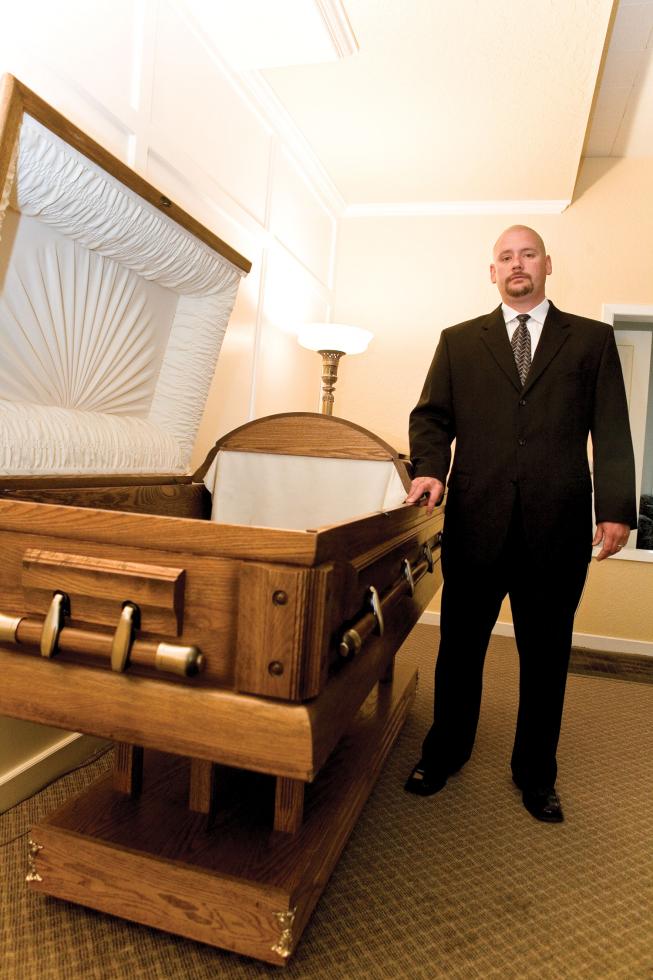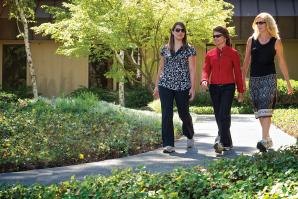Joseph Murray, owner-manage, Truckee-Tahoe Mortuary in Truckee

Since they first began squirming in their bassinets in the late 1940s, baby boomers have created unprecedented demand for the industries that cater to their needs. The generation has moved from toys to blue jeans to cosmetic surgery. Now the oldest boomers are in their mid-60s and are purchasing life insurance and long-term care assistance.
Which brings us to the outlook for the funeral business. Or, as it sometimes refers to itself, the death care industry.
The National Funeral Directors Association notes that after a 20-year decline, the annual death rate is expected to creep up again. It bottomed out last year at 7.9 per 1,000, is expected to hover at 8.3 for the next decade, hit 8.6 by 2025, and 9.6 by 2040.
At the same time, cultural forces are challenging funeral homes. Now 36 percent of deaths are followed by cremation, up from only 24 percent a decade ago. In California it’s about 50 percent and in Nevada nearly 70 percent.
“Historically, the funeral home profit came from the merchandise we sold,” says Jeff Stephenson, coordinator of the Funeral Service Education Program at American River College. Cremations eliminated two big-ticket items: the casket and the vault, which can add more than 40 percent of the cost to a typical funeral package, according to the national association. Even if the family has a viewing before the cremation, the casket can be rented.
Some funeral homes are expanding services, such as turning extra rooms into reception halls, to make up the difference.
“It’s kind of a regional thing, and it’s more of an urban thing than a rural thing,” says John Reed, immediate past president of the national association, and owner of Dodd & Reed Funeral Home in Webster Springs, W.Va. In his part of the country, families are often connected to churches where mourners can gather at little or no cost for a meal after the service.
“But in more urban markets there is less and less of that taking place,” he says.
Customization can boost revenue, too, according to Stewart Enterprises Inc. The Louisiana-based corporation owns 218 funeral homes across the country, including seven from Grass Valley to Stockton. In its annual report the company gives a few examples: “In addition to a personalized memorial service to celebrate the life of the deceased, an enhanced cremation may include a casket, an urn and a niche in a mausoleum or columbarium in which to place the remains.” Other new products and services can include meals and flowers, travel arrangements, tribute DVDs and photo memory books.
Corporate ownership began changing the local markets in the 1990s. In addition to Stewart, there’s Service Corporation International, a Texas company that owns eight funeral homes in the Capital Region. Sacramento’s own East Lawn Memorial Parks & Mortuaries owns another half-dozen, including Sierra Hills Pet Cemetery.
Nationwide, corporate ownership accounts for about 10 percent of the business. California has more corporate presence, Reed says, possibly because it had more high-volume funeral homes that made attractive acquisitions. Funeral homes, like most other businesses, are hard to keep in a family more than two or three generations, he says.
George L. Klumpp Chapel of Flowers Inc. claims to be one of only four family-owned and independently operated funeral homes in the Sacramento area. Corporations made overtures to buy it in the ’90s, but it wasn’t hard to turn them down, says owner Marlene Oehler, whose family bought the business from the Klumpp family.
Money wasn’t the issue, she says. It was a case of sticking with a profession that was part of the family’s identity. She also wanted to avoid high staff turnover.
“We see it in the organizations that have been purchased by the corporations,” she says.
Having reliable staff is important in any business, but especially so when dealing with grieving families.
“A lot of people we hire, we make sure they already have experience,” says Joseph Murray, owner-manager of Truckee-Tahoe Mortuary in Truckee. “It’s a small town. One little mistake, and that could be a big problem for us.”
Nearby, American River College is training the next generation of embalmers and funeral directors. Its two-year Funeral Services Education program leads to an associate of science degree. To become a licensed embalmer, a student also must finish a two-year apprenticeship, take a state board exam and pay a fee. She’d need a separate license and state board exam to become a funeral director.
That’s “she” because more than half the workers entering the business these days are women. At American River College, it’s about 75 percent, Stephenson says. About 20 to 25 students graduate each year.
Most aren’t following a family tradition: 86 percent of mortuary students identify themselves as the first generation in the business, according to a 2009 survey by the national association.
“Usually I hear a lot of students talk about it being a helping profession,” Stephensonâ?¨ says. “Most of them are very empathetic or very caring. They find this as a way to use their skills to help a family through the process.”
Students need some background course work in anatomy to get into the program. They then learn embalming, pathology and merchandising, plus the laws and ethics of the business.
There are about 19,900 funeral homes in the country today, down from about 22,100 a decade ago. Reed sees that downward trend continuing even as the death rate rises.
“A lot of the smaller businesses won’t be in business as we know them,” he says. The industry is already consolidating and sharing. A new hearse, for example, can easily run $100,000. If one funeral home does about 50 funerals a year and a nearby competitor also does 50, there’s no need to buy two cars, Reed says. Or one funeral home might rent out the embalming room of another.
Still, about 80 percent of mortuary students expect to have a job within three months of graduation, according to a 2009 survey by the National Funeral Directors Association. However a separate study this year showed about an $8,000 gap between the $40,000 starting salaries they were expecting and what funeral homes plan to pay.
Recommended For You

Don’t Let Your Business Die With You
Why your company should consider key-man insurance in 2014
Small businesses that bloom usually succeed by filling a niche that no one else can, offering unique skills, personal service or a killer product. But they also often depend on the know-how of one or a few irreplaceable people. If tragedy strikes them, it can take down the whole firm.

Fate Expectatons
Life expectancy rates for women are declining in some communities
Women in some parts of the United States are dying younger than they did a generation ago.


